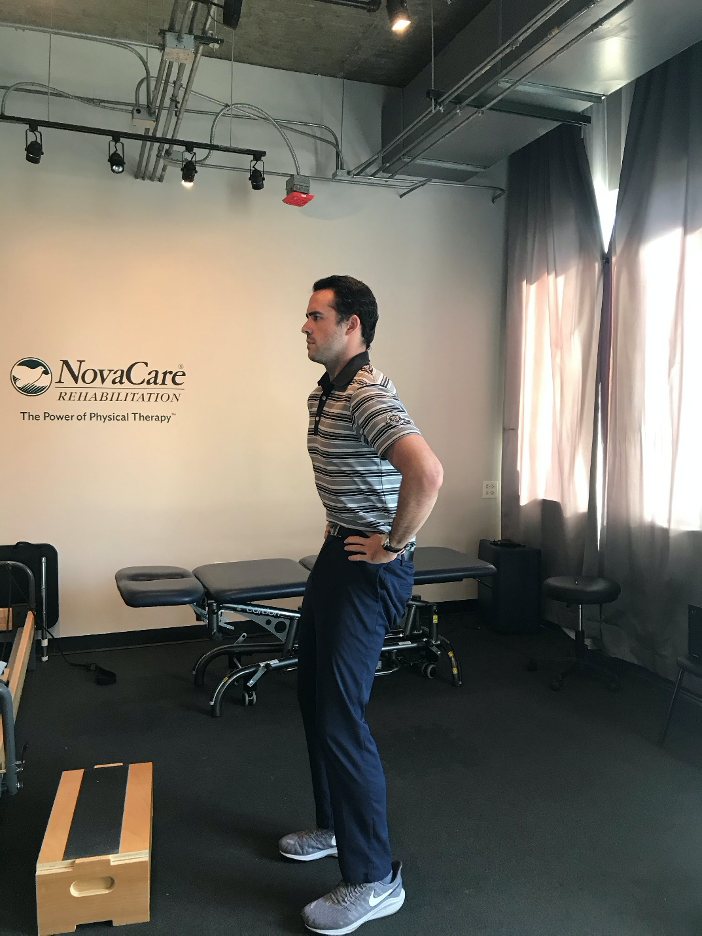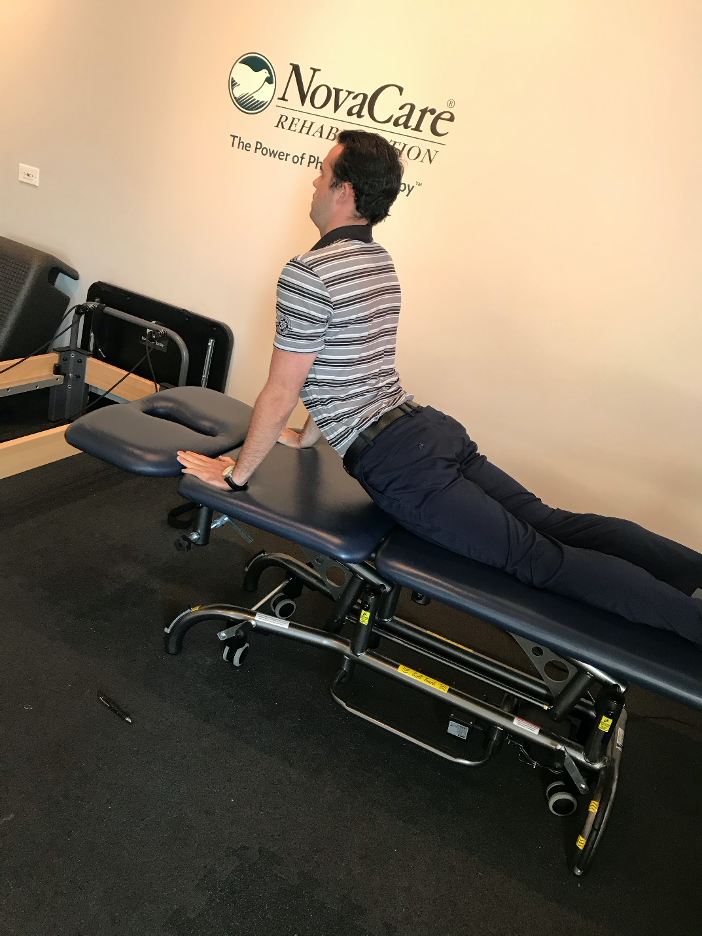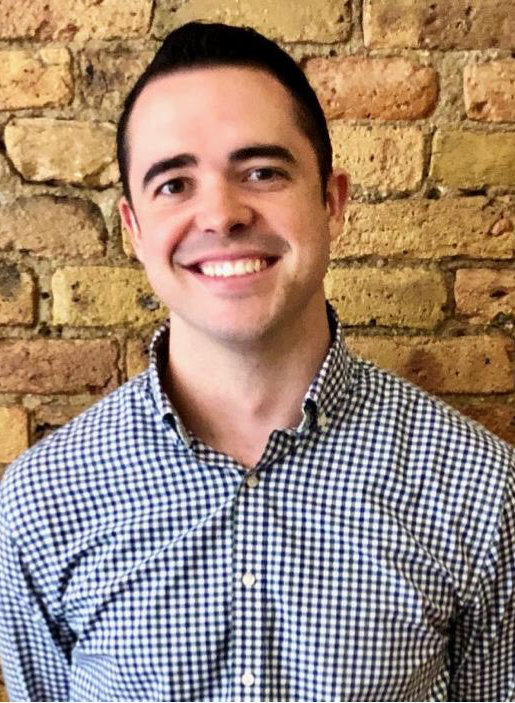Calling All Golfers: Try These Exercises To Prevent Or Treat Aches And Pains
With warm weather and blue skies dominating the forecast, Chicagoans are continuing to find socially-distant ways to enjoy the outdoors this summer. Chicago recently entered Phase IV of reopening, bringing with it newly opened parks and outdoor recreational venues like tennis courts, softball fields and golf courses.
These sports may seem like relatively low-intensity bouts of exercise, but as we get older, each of these rotational sports requires more baseline fitness to prevent injury. In this blog post, we will go over common injuries for golfers and other recreational athletes, along with some stretches and exercises to ensure we are ready to “go low.”
The game of golf requires many different combinations of strength and flexibility, including pelvic stability, thoracic rotation, lumbar to pelvic disassociation, trunk and shoulder mobility, hip rotation and core strength. Common injuries related to golf include low back pain, elbow injuries and knee pain.

Low Back Pain
Starting with the most common injury complaint among golfers: low back pain. The incidence of golf-related low back pain ranges from 15% to 34% among amateur golfers and 22% to 24% among professional golfers. 1 A major role in the incidence of low back pain is the lack of core stability during the golf swing, lack of warmup prior to a round, loss of posture during the swing and inadequate hip rotation during the swing. While golf is seen by many as a leisure sport, professional golfers are now strength training more than ever to combat sport-related injuries.
Below are two stretches and two exercises to help alleviate low back pain:
Knee to Chest While Walking

Standing Quadriceps Stretch

Pelvic Tilts



- Lay on back with knees bent, feet flat on ground
- Place hands on hips
- Draw belly button towards spine and flatten back onto mat
- Hold 2-3 seconds
- Reset
Prone Press-Ups


- Lay face down
- Place hands on mat by shoulders
- Press into ground and begin to straighten elbows
- Keep glutes relaxed as chest lifts off mat
Elbow Injuries
Elbow injuries are common in golf and tennis. Medial epicondylitis (also known as Golfer’s elbow, Little Leaguer’s elbow or Thrower’s elbow) is an injury occurring at the inner aspect of your elbow, while Lateral epicondylitis (tennis elbow) is an injury occurring at the outer aspect of your elbow.


Medial epicondylitis occurs when we “chunk” shots, hitting too much of the grass or sand during our swing, whereas Lateral epicondylitis occurs when we use too much of our right hand for right handed golfers. Elbow injuries most commonly occur from a lack of upper back rotation (thoracic rotation), decreased shoulder mobility and poor shoulder blade (scapular) stability.
The stretches and exercise below will assist with the mobility needed for elbow injury prevention:
Wrist extensor stretch

- Lift arm in front of chest palm down
- Take other hand and gently press hand down bending at wrist
Wrist flexor stretch

- Lift arm in front of chest, palm up
- Take other hand and gently press hand down bending at wrist
Press-Up Plus


- Start at top of push-up position
- Keep elbows straight while squeezing shoulder blades together
- Push shoulder blades apart rounding the upper back
Knee Pain
A 2011 study on 504 individuals over the age of 50 revealed that 46.2% reported having knee pain.2 In a golf swing, a lack of hip and/or trunk rotation, pelvic stability and “over-swinging” can result in injuries to the knee — most commonly, a meniscus tear. Formerly known as “tearing your cartilage,” a meniscus tear occurs when the body is rotated over a bent knee over a planted foot. The risk of injury increases as our trunk and hip rotation decreases, compensating by having our lead knee bend in during the backswing and bend out and rotate forcefully during our downswing and follow-through. Force can be taken off the knee by improving our hip and trunk rotation, core stability and increasing our gluteal strength.


If you are experiencing knee pain or are looking to improve your rotation, core stability and gluteal strength, check out the exercises below:
Hip abduction


- Lay on side
- Straighten top leg, bend bottom leg
- Lift top leg
- Keep toes pointed down towards ground
Book openers


- Lay on side, knees stacked and bent
- Stack arms in front of face
- Slowly open top arm towards sky, following hand with eyes
- Rotate chest open
Lateral step downs


- Stand on box or step with one foot
- Keep weight through heel of standing leg as you tap other heel onto ground
- As the knee bends make sure to keep knee in line with middle toes
Hamstring stretch


- Lay on back
- Lift one leg towards face using strap or towel as assistance
- Try to keep knee straight of lifted leg
- Hold for 30-60 seconds
1. McHardy AJ, Pollard HP, Luo K. Golf-related lower back injuries: an epidemiological survey. J Chiropr Med. 2007;6(1):20-26. doi:10.1016/j.jcme.2007.02.010
2. Nguyen US, Zhang Y, Zhu Y, Niu J, Zhang B, Felson DT. Increasing prevalence of knee pain and symptomatic knee osteoarthritis: survey and cohort data. Ann Intern Med. 2011;155(11):725-732.


Post written by FFC Contributor and NovaCare Gold Coast Physical Therapist Casey Gray.

Casey Gray is a physical therapist at NovaCare Rehabilitation inside FFC Gold Coast. He enjoys using his outgoing personality and positive attitude to optimize treatment of the entire individual. Casey recently graduated with his doctorate of physical therapy from University of Saint Mary, located outside of Kansas City, Kansas. Casey enjoys playing and watching sports like basketball, football, baseball, and golf.


